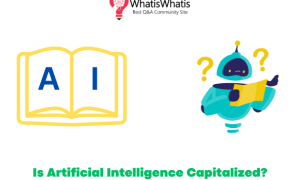Big data, Artificial Intelligence, and Machine Learning are interdependent and each of them can’t work efficiently without the help of others. Commercial and social landscaped is now completely changed with the cooperation of machine learning, artificial intelligence and involvement of big data. But due to many issues emerging with these sectors, CIOs should be aware of them.
Read more: Artificial Intelligence: In Search of ‘Robo Sapiens’
Revolution in AI was started decades ago but providing smarter services with ease by companies is empowering it on broader scales than ever before. It’s the AI revolution that is changing everything over the globe. It’s very critical to define the scope of Artificial Intelligence as it is emerging in every industrial sector. But its scope can be categorized into four areas:
1- Exponential technologies
2- Techniques in pattern recognition
3- Software agency
4- Superhuman intelligence
Fortunately or unfortunately superhuman intelligence hasn’t happened yet. But in the other three areas, AI is making huge huge strides and pace of AI isn’t getting slow. It is advancing in sectors such as manufacturing, healthcare, retail, finance and auto. Tech biggies like Apple, Google and Amazon are investing to create AI more accessible for companies. Here are 5 facets that are accelerating the rate of innovation.
Read more: Here’s how big data analytics is transforming the entertainment industry
3 Factors Shaping the Future of Big Data & Machine Learning
Advanced computing architecture:
Conventional microprocessors are unable to take care of machine learning. Even the fastest CPU can’t intricate ML version. CPUs have to be complemented with a new breed of chips for training Machine learning versions that provide intelligence. A graphical processing unit (GPU) has been in demand due to the rise of Artificial Intelligence. GPUs, CPUs that hasten the ML training procedure arrives with tens of thousands of cores.
Read more: What Are The Predictions of People About IoT (Internet of Things)
GPUs are essential for conducting a trained version for inferencing. GPUs would be the key to AI from the cloud to customer devices. Field Programmable Gate Array or FPGA is the innovation for CPUs. these chips are very advanced and programmable to get a particular sort of workload in an efficient way. They are not for the general-purpose just like conventional CPU but they are programmed from the area once they are fabricated and are used in market computing tasks and many others. These inventions fueled AI and AI is adopted in sectors like automotive, picture processing, aerospace, manufacturing, and health.
Algorithms and hardware:
Due to its strong algorithms that are highly efficient to work with IT hardware like deep learning and pattern recognition forced organizations in the adoption of Artificial Intelligence. AI with the help of machine learning and big data providing a lot of solutions to companies to combat their problem.
Read more: How Artificial Intelligence is Transforming Telecommunication Sector?
AI is providing account management, customer service, and complete identity verification service. With many free AI software, many companies who would never have thought about installing AI in their premises are transforming their infrastructure. Nvidia’s deep learning chip, tensor processing uni (TPU), IBM’s TrueNorth neuromorphic computing platform and Qualcomm’s new neural processing unit (NPU) are next level hardware advancements in artificial intelligence.
Accessibility to data sets:
Accessing and saving information was pricey before the cloud became mainstream. The information which was once restricted to the magnetic discs and cassette cartridges is now unlocked by cloud-based companies and authorities. Big data is required by data scientists and they want to access large datasets to train and educate ML models to make them more accurate and precise. Precision and accuracy of the ML version depend on the quality of data set provided to it while training.
Read more: What are the Challenges and Risks that are possessed by IoT & Blockchain
Researches require big datasets with varied data issues for massive problems like discovering or identifying cancer. Recovery and information storage is more economical while using cloud-based services and institutions are providing cloud data that is available for their employees. High-performance computing apparatus and abundant data together will induce next-generation AI. Information scientists and researchers are innovating day by day at a fast pace with the collaboration of next-generation architectures and rich datasets, together they are empowering technology.






Leave a comment